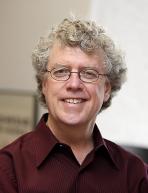非常抱歉,
你要访问的页面不存在,
非常抱歉,
你要访问的页面不存在,
非常抱歉,
你要访问的页面不存在,
验证码:

职称:Professor
所属学校:Stony Brook University
所属院系:Embryology
所属专业:Pharmacology
联系方式:631-444-3978
Our research engages a range of topics at the intersection of biomedicine and the environment. This interest has been driven by trying to understand how cells defend against damaging molecules that are endogenous to cells but also produced by environmental agents. One strong theme has been defining the biochemical and biological functions of repair pathways for oxidative DNA damage. Another major theme of our work has been discovering and defining genetic regulatory systems that govern cellular responses to oxidative stress and nitric oxide. These two areas synergize in various ways: for example, the oxidative stress caused by arsenite exposure activates the APE1 gene, which encodes a central component of DNA repair and is vital to cell survival. Some recent studies expanded our analysis to mitochondria, the cellular energy organelles that maintain their own DNA genome. DNA repair in mitochondria was considered very limited, but these studies have demonstrated new proteins and pathways that were previously thought lacking. Investigations continue on Ape1 protein functions in the cell beyond DNA repair, and on understanding the mechanisms that partition oxidative DNA lesions among competing repair and mutational pathways.Prof. Demple has been involved in research on DNA repair since his graduate studies at U.C. Berkeley, where he discovered the first DNA glycosylase acting on oxidative DNA damage. As a postdoctoral fellow, he isolated the sacrificial repair protein O6-methylguanine-DNA methyltransferase and showed that it acts with “suicide” kinetics. He identified the active site cysteine, and used protein sequence information to help clone the ada gene encoding the methyltransferase. During this time, he also carried out independent work establishing the existence of an oxidative stress response to hydrogen peroxide. Prof. Demple began his own laboratory in 1984 with studies of both DNA repair and cellular responses to oxidative stress, and the group has pursued aspects of both ever since. Some key discoveries include: 1) indentifying the enzymes in bacteria, yeast and human cells that excise 3’-fragments of deoxyribose at oxidative strand breaks, and cloning the yeast (APN1) and human (APE1) genes encoding these enzymes; 2) discovery of the oxyR-dependent control of metabolic H2O2 production in E. coli; 3) discovery of the soxRS regulatory system that responds to stress by superoxide-generating agents; 4) defined the redox activation mechanism of SoxR dependent on its iron-sulfur centers; 5) demonstrated the soxRS role in resistance to macrophages that generate nitric oxide; 6) showed that soxR mutations aid the development of some clinical antibiotic resistance; 7) defined the mutational specificity of abasic sites generated endogenously in yeast; 8) demonstrated that the DNA repair activity of Ape1 protein is essential, even at the level of individual cells;